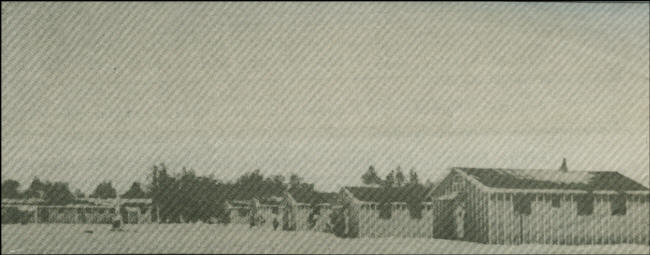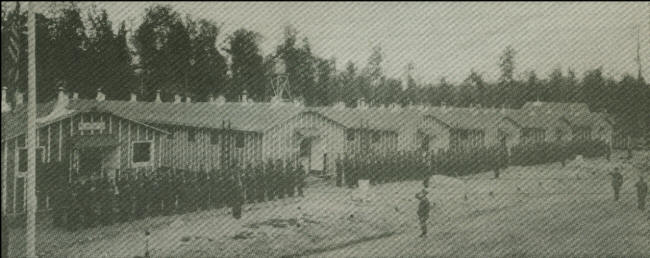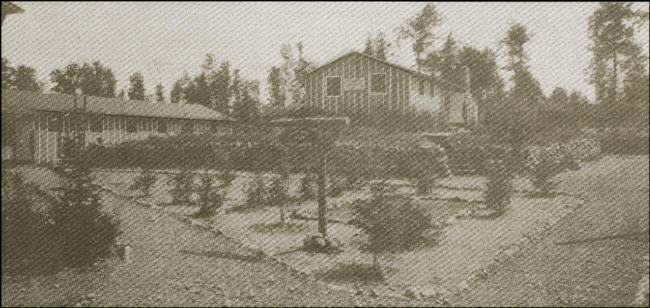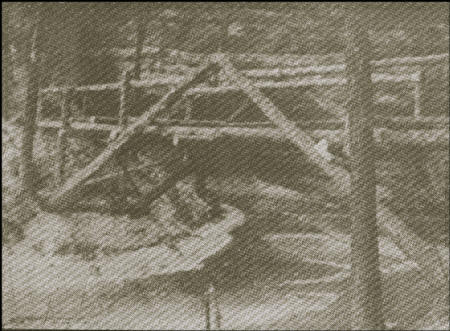|
|
|
Clark County Press, Neillsville, WI September 30, 1993, Page 32 Transcribed by Dolores (Mohr) Kenyon. Index of "Good Old Days" Articles
|
|
|
|
Clark County Press, Neillsville, WI September 30, 1993, Page 32 Transcribed by Dolores (Mohr) Kenyon. Index of "Good Old Days" Articles
|
Good Old Days
By Dee Zimmerman
The Great Depression… well remembered by those who lived through it. What they experienced had to have made a difference in how they lived out their lives.
The “crash” of the late ‘20’s brought about the ‘30’s Depression. One-fourth of the nation’s unemployed men and women were without jobs in 1930.
Three years later, 1933, the newly elected president, Franklin Delano Roosevelt, came into a difficult situation. With 14 million men and women unemployed, the nation was bankrupt in money and morale. Our country was responsible for the soup lines, unemployed and homeless families. Roosevelt took on the responsibility of doing something to combat the Depression.
F.D.R. initiated various programs designed to assist the people in the struggles to survive their plight. Delivering a message to Congress, March 21, 1933, he said, “I propose to create a Civilian Conservation Corps to be used in simple work, not interfering with normal employment, and confining itself to forestry, the prevention of soil erosion, flood control, and similar projects. I call your attention to the fact that this type of work is of definite, practical value, not only through the prevention of great financial loss, but also as a means of creating future national wealth.”
A few days later, President Roosevelt signed the Emergency Work Act, which created the Civilian Conservation Corps, (referred to as the CCC). He then appointed Robert Fechnet, a labor union leader, as its director and informed the departments of Labor, War, Agriculture, and Interior to cooperate with the new director. Through the combined efforts, they recruited millions of young men for a peacetime army to build truck roads, develop parks, fight fires, plant trees, and work on various other tasks.
Groundwork was laid for another relief effort, the Works Progress Administration (WPA), which provided employment for the needy and developed a labor force for small public projects. Between 1935 and 1938, WPA provided three quarters of the job opportunities available to the American work force.
WPA proposed projects were sponsored by local and state government. As each project was approved, WPA arranged the funding and labor force. The local government had to maintain the improvements after the projects completion.
Many local farmers were able to work temporarily on WPA projects. When the summer/fall fieldwork was done they were free to earn some additional income. Those who worked on township and county roads projects provided a team of horses, wagon and their own shovel needed in hauling gravel to surface the roads. To make that job of unloading the wagon quicker, the men layered 12 dump planks per wagon (planks leveled on the ends), properly placed 2 by 4’s under the planks, when lifted manually, releasing the gravel onto the road. Each man, with his team and wagon, was paid 75 cents per hour.
Unemployed men with families, living in small towns throughout Clark County, also worked on local WPA projects. WPA early days projects were road construction. The later years work centered more on municipal water and sewage systems, public buildings, parks and recreational projects.
During that era, Conservation construction projects were many, such as erecting dams, erosion control, sewage treatment, decreasing water pollution and developing recreational lands.
In the beginning, the CCC recruits trained in a military setting at established army camps, young men ages 18 thru 25, were eligible to sign-up and had to serve six months with the option to reapply for another six-month stint. They each had to pass a physical examination before acceptance.
Salaries were $30 per month, with $25 being sent home, to help the family and $5 was given to each man for his month’s spending money. They had some leisure time and could go to town on Saturday night or Sunday church services, providing they found transportation.
World War I clothing surplus was issued to the young CCC’ers. Each man was responsible for laundering and mending his clothes. Often the water supply was available at a nearby spring, to be carried by buckets.
Quoting one CCC veteran, “The food was excellent. Coming to the mess hall on that first morning, we were rewarded with the best breakfast I ever ate. We had eggs, bacon, fried potatoes, pancakes, bread & butter, coffee, milk, cake and pie.”
Forty CCC camps sponsored by the USDA Forest Service were established in Wisconsin. Also, eight CCC camps were set up by the National Park Service at Perrot, Pattison, Devil’s Lake, Rib Mountain, Interstate, Peninsula, Copper Falls and Wyalusing state parks.
|
|
CCC'ers placing fish shelters on Wisconsin lakes during winter months. After spring thaw, the shelters settled to the lake bottom.
Clark County had two CCC camps, Camp Lake Arbutus near Hatfield, across the road from the junction of Riviera Road & CTH “J” and a camp at Rock Dam.
The CCC men were trained and required to do various work. They took on the jobs, just happy to have work, to be earning a wage. Some of the tasks were: fire fighting, building roads and bridges, mapping park trails, laying power lines, planting trees, stocking fish in lakes and streams, building dams, developing park grounds and campsites, irrigation canals, etc.
In the beginning, the men slept in tents living in primitive conditions until buildings could be erected in the camps. Construction within the camps was done by the CCC’ers under guidance of experienced tradesmen. Many young men learned skills such as carpentry, masonry, landscaping, plumbing, etc. in the CCC camps, trades that they would take back into the civilian work force.
Quoting one CCC’er; “While in the CCC, I received discipline, worked hard, learned how to get along with others, developed a personal pride, knew patriotism and broadened my life in many other ways. I leaned a trade which served me well, both in civilian life and when I served in the U. S. Army during World War II. Entering the armed services was easy as I had done similar basic training and conditioning in the CCC’s.”
In the early ‘40’s the depression subsided and private industries recovered to provide employment. At that time the world became engaged in World War.
The WPA and CCC’s were very productive during their existence. Evidence of what they did is very visible throughout our county and state.
Now, years later, we tend to forget all of those accomplishments even though we are still benefiting in the “harvest.” Let us keep this in mind as we travel, appreciate what was done by the two work forces at that time, when we view the results.
Out of the adversity of the Depression, there was a re-discovering and innovation that made a lasting impact on our country and its people.
For those interested in the CCC camp history, there is a CCC Museum in conjunction with the Rhinelander Logging Camp.
(Thanks to Larry Langreck, a former CCC’er, who provided photographs and information for this article, also, Thanks to Jeannie Erickson for the Hatfield Camp photo).
 |
Camp Lake Arbutus near Hatfield, a Civilian Conservation Corps
Camp, located across the road from the Junction of Riviera Road and CTH J.
 |
Camp Pine River, located near Three Lakes, WI
The CCC “boys” stand at attention, lined up for retreat
 |
Entrance to Camp Pine River, near Three Lakes, WI
The landscaping and stonework was done by the CCCer’s
 |
A rustic bridge built over Small Canyon, a project of the CCC’s park developments
|
© Every submission is protected by the Digital Millennium Copyright Act of 1998.
Show your appreciation of this freely provided information by not copying it to any other site without our permission.
Become a Clark County History Buff
|
|
A site created and
maintained by the Clark County History Buffs
Webmasters: Leon Konieczny, Tanya Paschke, Janet & Stan Schwarze, James W. Sternitzky,
|